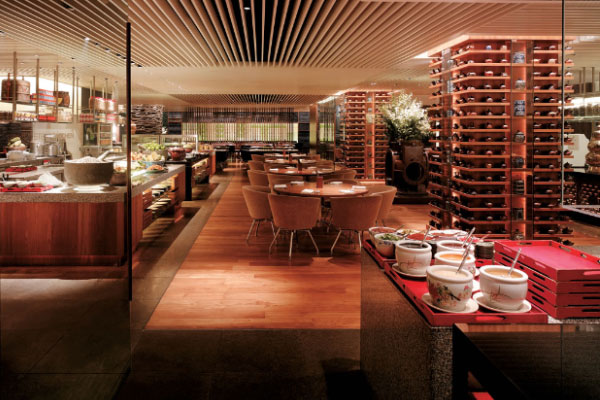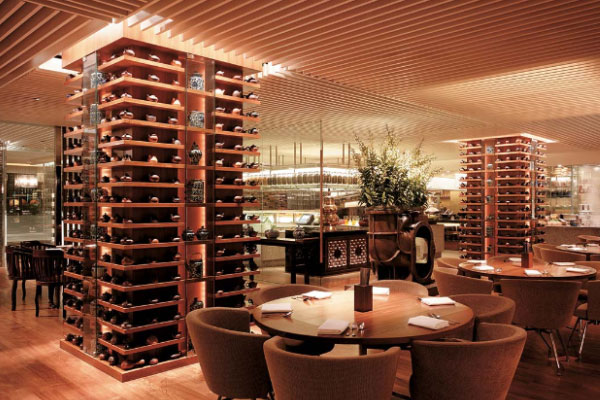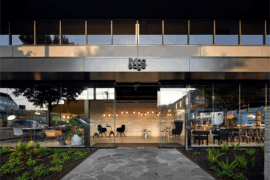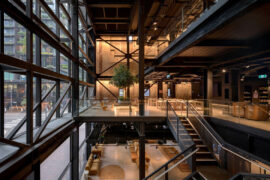Mediating Japanese aesthetics with local cultures is central to Super Potato’s philosophy, the design firm’s Vice President Shinya Norihiko tells Iliyas Ong.

August 7th, 2014
When Shinya Norihiko puts on the juror’s hat at this year’s President Design Award Singapore (PDA), he will be looking out for one fundamental element he considers evidence of ‘good design’: creativity.
The Vice President of Tokyo-based interior design firm Super Potato says the task of designers is not to produce objects that are mere pieces of eye-candy but to “innovate for the future”. Which is why high-quality fabrication and what Norihiko calls “hidden meaning” figure prominently in his firm’s work. These elements, according to the designer, are the hallmarks of Japanese design.
Although this is his first time as a PDA juror, Norihiko is no stranger to Singapore. He has spent more than 17 years shuttling between Tokyo and this city, and has worked on numerous projects here, notably those for Grand Hyatt Singapore. As a vast majority of Super Potato’s projects are located outside of Japan, Norihiko doesn’t simply slap on Japanese aesthetics. “We need to bring in the local flavour and cultures,” he insists.

Straits Cafe at Grand Hyatt Singapore
Straits Kitchen, a restaurant in the Grand Hyatt Singapore whose specialty is local food, at first flummoxed Super Potato. While the firm conducted studies of the local food culture, they couldn’t find an overarching defining feature. “Chinatown, Arab Street and all the districts have their own distinct features,” recalls Norihiko. “Eventually, we realised Singapore is a huge mix of everything. That is the Singaporean culture.”

Straits Cafe at Grand Hyatt Singapore
So the practice conceived of a ‘hawker centre’-inspired dining space, complete with show kitchens, open shelves displaying exotic knick-knacks, and significant use of timber and stone. Norihiko believes that the only Japanese influence in the 260-seater restaurant is “the invisible beauty behind the design”. “The ‘meaning’ of the design is the most important for our [Japanese] identity. But we cannot [outwardly] show this, so it’s not that [evident] in the visuals,” he says.
Super Potato has yet another strong link to this island, adds Norihiko. It’s where the firm has established its ‘off-site construction’ base. At this warehouse, the firm is able to mock-up the entire interior space – including finishings, furniture, fixtures and lighting – and then ship it to the project site. Currently, Super Potato is using this method on a hotel in Kazakhstan.
“Japanese engineering and craftsmanship is very detailed and strict. But we want to achieve the same level of quality with our foreign projects. [With off-site construction], our customers can come in [to the warehouse] to comment and fine-tune,” says Norihiko. He adds that Singapore’s strategic location also allows him to source material from Thailand, Malaysia and Indonesia, for example.
Strangely enough, it’s this city’s small size and lack of natural resources that Norihiko finds most in common with his native country. He wants to support the Singaporean design industry and scout new talent; hence, he accepted the invitation to join the panel of jurors at the PDA. But he admits that while Japan has a very recognisable style, Singapore has less of a strong identity.
But he expects this to change soon. “Many conditions in the world are changing culture. With China and Singapore growing, their cultures – the Asian culture – will become mainstream. I hope Singapore will also become famous for its design.”
Super Potato
superpotato.jp
INDESIGN is on instagram
Follow @indesignlive
A searchable and comprehensive guide for specifying leading products and their suppliers
Keep up to date with the latest and greatest from our industry BFF's!

For Aidan Mawhinney, the secret ingredient to Living Edge’s success “comes down to people, product and place.” As the brand celebrates a significant 25-year milestone, it’s that commitment to authentic, sustainable design – and the people behind it all – that continues to anchor its legacy.

A longstanding partnership turns a historic city into a hub for emerging talent
The internet never sleeps! Here's the stuff you might have missed

Tzannes has completed work at The Brewery in Sydney’s Central Park, marking the culmination of an internationally significant adaptive reuse project.

Grounded by the rich warmth of American white oak, The Standard’s newly opened restaurant, Kaya, redefines the classic dining convention through a tasteful fusion of biophilic design, mid-century modern sensibility and elevated whimsy.